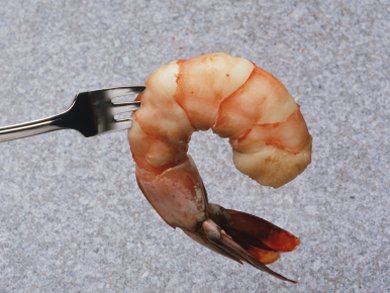In the past year there have been increased reports in Belgium of the detection of semicarbazide (SEM) in imported freshwater Macrobrachium rosenbergii prawns. Detection of SEM implies that nitrofurazone, a banned antimicrobial agent, is present. A limit of 1 μg kg−1 is fixed within the European Union for this carcinogenic compound.
As the occurrence appeared to be limited to Begium, the only EU state that analyzes both the meat and the shell of the prawn, Christof Van Pouck, Ghent University, Belgium, and co-workers have investigated possible sources of SEM in prawns. They tested two groups of prawns, one raised under standardized laboratory conditions with no exposure to nitrofurazone, while the other group was exposed to a daily dose of 50 mg of nitrofurazone L−1 of culture water.
They found that SEM can occur naturally in both the meat and shells of prawns. Consequently, SEM should not be used as an unambiguous marker for nitrofurazone abuse, leading to a clear need for an alternative marker to prove such abuse.
- Investigation into the Possible Natural Occurence of Semicarbazide in Macrobrachium rosenbergii Prawns
C. Van Poucke, C. Detavernier, M. Wille, J. Kwakman, P. Sorgeloos, C. Van Peteghem,
J. Agric. Food Chem. 2011.
DOI: 10.1021/jf103282g




